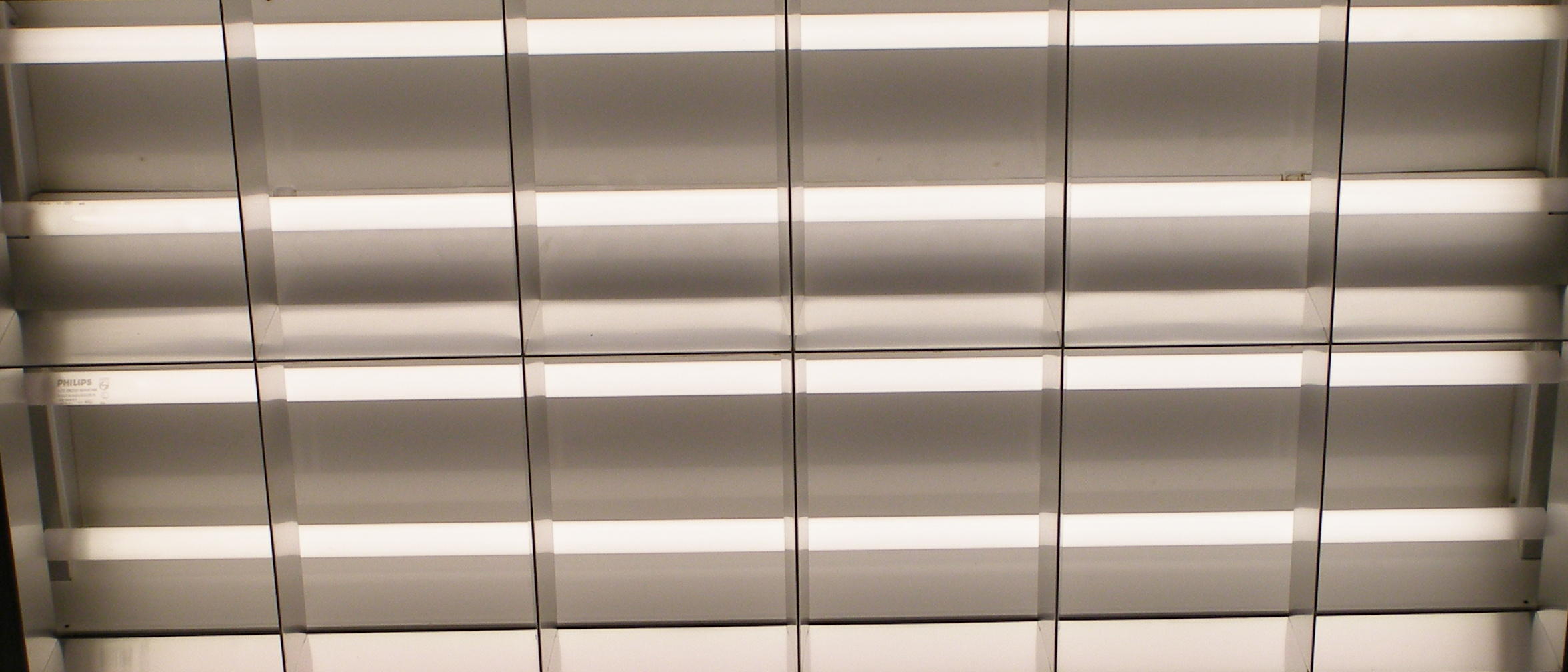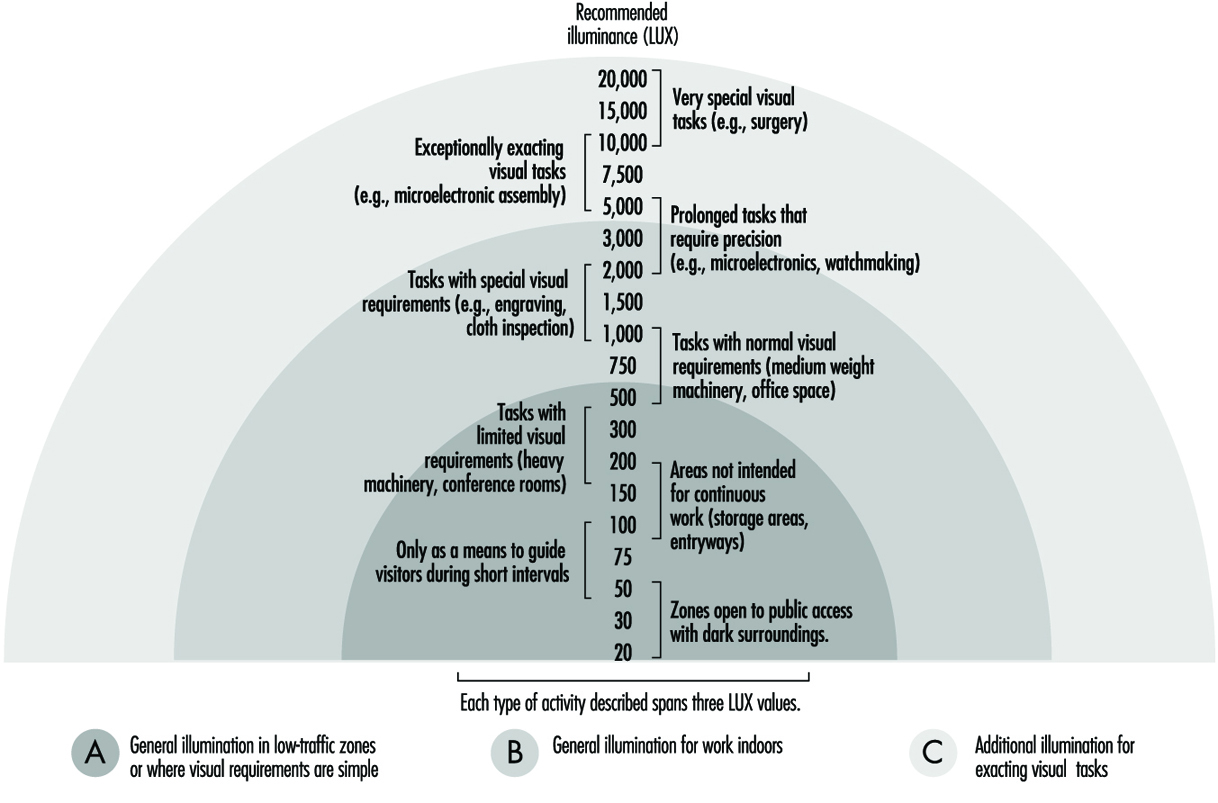Workspace Lighting Levels
Is There Such a Thing as Too Much Light?
Just looking at that picture of a fluorescent fixture makes my eyes hurt – no joke! It’s really bright, almost painfully so, especially when presented on an illuminated screen. This little problem is known as over-illumination, or too much of ‘the luminous intensity per unit area of light travelling in a given direction. It describes the amount of light that passes through, is emitted or reflected from a particular area, and falls within a given solid angle’ (luminance via the wikipedia). There are literally hundreds of articles addressing the study of lighting in an office. According to Business Insider, Fast Company, BufferSocial, The Atlantic, Cornell University, and other articles and studies (including but not limited to Occupational Health & Safety programs), the lighting environment in an office can affect everything from productivity, mood, food choices, energy levels, attention to detail, and even the temperature on the thermostat – which leads to more mistakes on work, if you believe another Cornell University study. If you find yourself walking out of your office and feel like you just spent all night in a really bad dance club, it’s possible that your office may be over-illuminating the space or using the wrong light sources.
On the other hand, light can be a powerful tool for guiding our bodies circadian rhythms, productivity, and the ability to feel energized or empowered. Not only that, but a well-lit task area can create a space that provides positive morale and a more uplifting environment. Good lighting improves performance by making tasks easier to see, and it highlights safety hazards – which protects both employees and the company. A well-designed lighting system will utilize both daylight and artificial light, rather than relying entirely on one or the other.

As we’ve discussed before, there is a science to light – to how our eyes perceive it, what our mind uses light for, and the difference we can sense in its ‘direction, texture, and temperature’. That means there are documented levels of light that our eyes need in order to complete tasks or accomplish work. But how much light is enough light? Well, this article from the International Labor Organization (sponsored by the UN) Encyclopaedia of Occupational Health and Safety compared multiple working environments and assembled a guideline for general purposes. The primary problems in lighting a workspace is A) do you provide enough light for completing assigned tasks, and B) does the light level take into account the age value of employees?
Does employee age matter? Absolutely – as Phillips and other lighting companies have examined over the years. For younger employees, who have more flexible and stronger eyes, over-illumination becomes a health concern as it contributes to our circadian rhythms, can trigger a constant sense of ‘fight or flight reactions’, contribute to headaches, fatigue, and anxiety. If this sounds like your office, then definitely consider speaking to someone concerned with the safety and well-being of employees. On the opposite end of the scale, workers over the age of 45 are increasingly struggling with work areas that are under illuminated for completing tasks and cause the same kind of symptoms for the wrong reasons. The ‘workplace lighting’ issue is large enough that Phillips actually created a Facebook widget that allows the upload of office pictures to help test indoor light levels.
What would be an ideal situation? Most likely, a mixture of natural light used in combination with artificial area and overhead lighting, general or ambient lighting, and individual workstation lighting controls. This is less of a problem for places that host individual offices or sectioned off work areas, but what about cube farms, or open floor plan offices? These locations are more susceptible to being either over or under illuminated (or both at the same time in different areas!) and offering little to no local lighting controls for employees. One of the great choices an employer can make to help their employees cope with lighting challenges is offering individual workstation lighting fixtures, like these:

In the long run, our mental and emotional well-being while working are too important to risk on something that should be an essential part of our environmental infrastructure. Again, if you are having any health issues like those listed above, don’t hesitate to reach out to a Human Resources or Health and Wellness representative at your workplace. If you are looking to improve the lighting functionality and aesthetics of your office space, then don’t hesitate – call Swartz Electric today!
Swartz Electric – Your Colorado Springs Electrician performs electrical work throughout Colorado Springs, Monument, Black Forest, Fountain, Falcon, Woodland Park, and everywhere in between. We are the electricians in Colorado Springs to solve your electrical problems and meet your electrical requirements.
Call, e-mail, visit our website, or stop by our office today, and allow Swartz Electric to serve YOU.
This is an original article written by Mai Bjorklund for Swartz Electric. This article may not be copied whole or in part without the express permission of Swartz Electric, LLC.
© Copyright 2016. All rights reserved.




